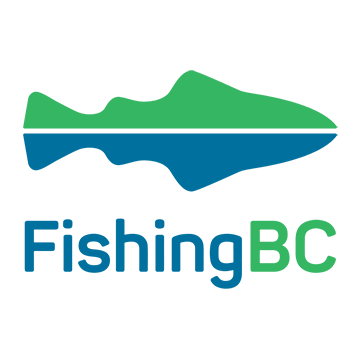You've got questions.
We've got answers... and videos.
Available Videos
- Introduction to the FishingBC App
- Introduction to Tidal Fishing Licences
- Initial Setup & Login
- Create a Profile
- Linking Your Fishing Licence
- How to Add a Licence & Switch Users
- Introduction to Fishing Regulations
- Using the Catch Log
- Species Identification
- Enhanced Species Identification
- Interactive Map Features & Functions
- Alerts & Notifications
- Weather & Tide Reports
- Salmon Heads for Science
- Release Best Practices
Introduction to the FishingBC App
Introduction to Tidal Fishing Licences
Initial Setup & Login
Create a Profile
Linking Your Fishing Licence
How to Add a Licence & Switch Users
Introduction to Fishing Regulations
Using the Catch Log
Species Identification
Enhanced Species Identification
Interactive Map Features & Functions
Alerts & Notifications
Weather & Tide Reports
Salmon Heads for Science
Release Best Practices
Learn how to increase the survival rate of released fish.
Salmon facts: did you know...?
If you notice drought conditions affecting salmon in your area, you can log them using the Pacific Salmon Foundation's drought reporting tool at PSF.ca. Together, we can help salmon by keeping more eyes on the ground.
AI tech and underwater cameras are being used to count and identify Pacific salmon as they return to spawn! This real-time data can help inform in-season decisions on harvest and management.
How is drought impacting creeks near you? Hotter, drier summers driven by climate change are increasingly pushing water temperatures past 18°C — the danger zone for Pacific salmon.
Did you know the Salmon Conservation Stamp generates around $1.5 million every year! The Pacific Salmon Foundation stewards these funds to support 150+ local salmon conservation projects across BC and the Yukon.
Less than 30 years ago, Columbia sockeye faced extinction. Thanks to community-driven efforts, we saw record Okanagan sockeye returns in 2022 and signs point to a lasting recovery.
Whirling disease can kill juvenile salmon and was recently detected in Kootenay Lake, BC. The best way to combat its spread is to clean, drain and dry boats and equipment when transferring between water bodies this summer!
Good news! Fraser and Vancouver Island Chinook are on the road to recovery. But salmon are complex — some Chinook in these regions remain endangered, and there's still important work to be done.
Adult Pacific salmon can swim over 50 kilometres a day on their journey home to spawn. But warming waters, pollution, barriers to fish passage, and other threats are making this daily marathon even more difficult.
Canada Geese overgraze critical salmon habitat in southern Vancouver Island estuaries. Thanks to Salmon Conservation Stamp funds, local groups are protecting these areas with goose-proof fencing.
Did you know? BC is home to 9,000+ salmon populations. While some migrate together, each is uniquely adapted to survive the challenges of its own migration route and home stream.
BC's Family Fishing Weekend introduces young people to salmon and angling every June. Thanks to Salmon Conservation Stamp funds, the Pacific Salmon Foundation has supported 15 celebrations.
Where do Salmon Conservation Stamp dollars go? Since 1994, the Pacific Salmon Foundation has leveraged these funds to invest $31M+ in local salmon stewardship projects across BC and the Yukon. Not bad for a $7.19 stamp!
Chum and steelhead are struggling the most across all salmon species in BC, according to the Pacific Salmon Foundation's State of Salmon report. But rebounds in other species show recovery is possible if salmon are given the opportunity.
The North Shore Streamkeepers leveraged $150,000+ in grants to restore salmon habitat at Lynn, Mosquito, and MacKay Creeks in North Vancouver. This work was funded through the Pacific Salmon Foundation with Salmon Conservation Stamp funds.
A toxin called 6PPD-quinone can leach off car tires into streams and kill coho salmon. This year, local stewards across BC are building dozens of rain gardens to filter toxic road runoff and protect salmon habitat.
Eye injuries reduce a salmon's chances of surviving catch-and-release. Using smaller hooks makes these injuries less likely and increases survival.
Did you know that even “fish-friendly” nets can split salmon fins and remove their protective scales and mucous? Avoiding landing nets during catch-and-release gives fish a better chance of survival.
Think about skipping the flasher! The added drag can leave salmon exhausted and more vulnerable to predators after catch-and-release.
Did you know that salmon have ear bones? Hatchery coho are more likely to have abnormal ear bones than wild coho, which could be linked to their lower survival rates.
Where does all the revenue from the Salmon Conservation Stamp go? In the last 35 years, the Pacific Salmon Foundation has distributed $31 million in grants to 3,500+ local stewardship projects.
Looking for simple ways to help salmon? When cleaning your boat,
consider avoiding products that contain chlorine and petroleum
distillates, as these can harm fish.
Dozens of volunteer citizen scientists went boating in the Strait of Georgia to collect ocean data as part of a Pacific Salmon Foundation initiative. This data helps us understand what affects the salmon food web.
What makes a salmon survivor? Along east Vancouver Island, the Pacific Salmon Foundation, partners, and local stewards are now tracking the return of over 2,500 of the 300,000+ salmon tagged in the past four years.
Still need help?
If you have a question about the FishingBC App please email us using the support link below:
If you have questions or concerns about Licensing or Regulations please email the DFO directly:


